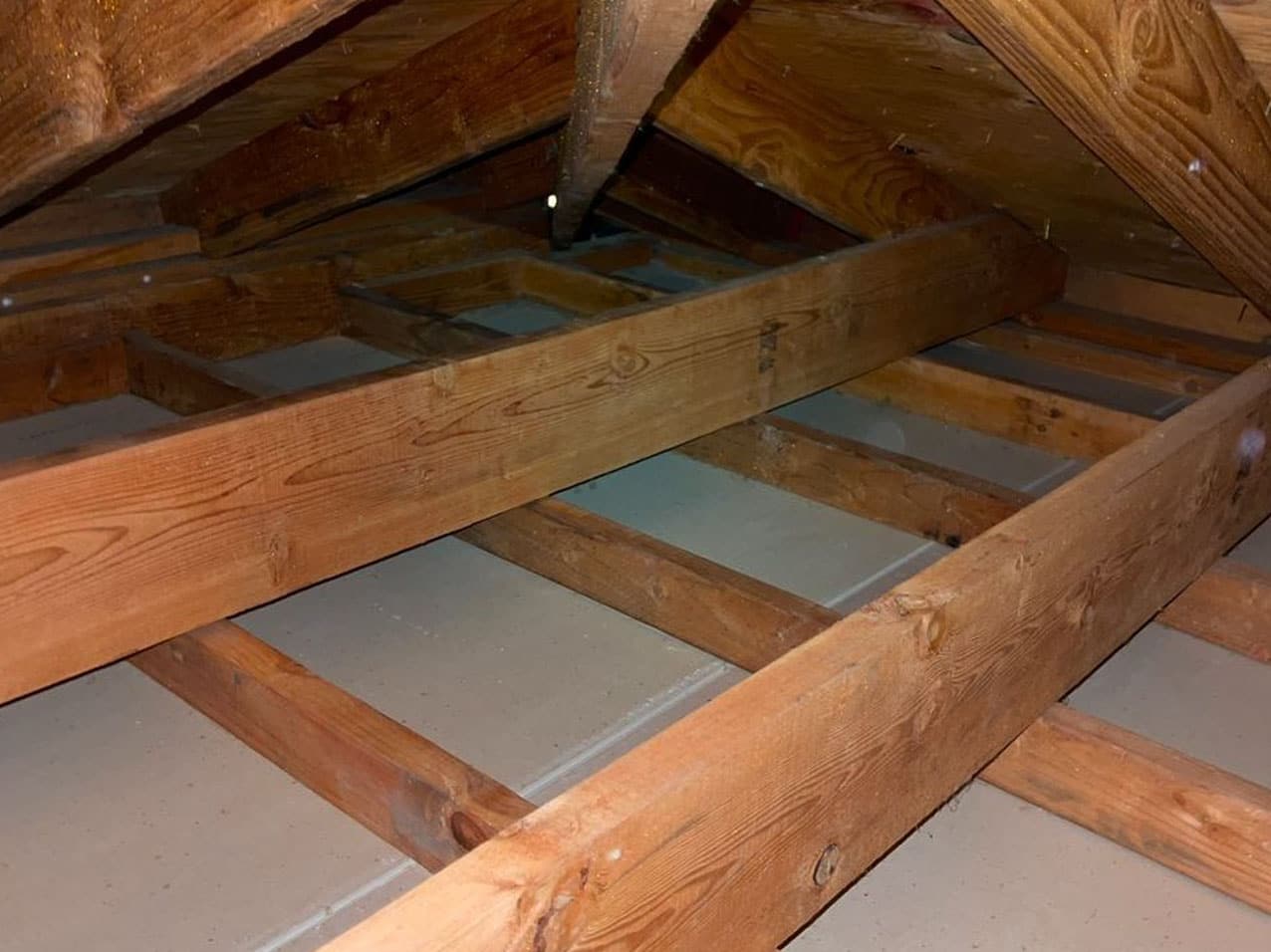When temperatures in California heat up, maintaining indoor comfort presents many challenges. In addition to trying to sustain cooler indoor air temperatures, property owners contend with high utility bills, struggling gardens, and increased fire hazards. Keeping your attic cooler, improving your homes energy efficiency and allowing the heat transfer from indoors to outdoors are all part of managing your attic space.
At Attic Projects, we offer various services designed to help residential and commercial property owners make the most of their attic spaces. We understand the dangers of extreme heat in attic spaces, and we’re here to tell you how to prevent your attic from overheating.
On this page, you’ll learn why attic spaces overheat, what can happen when they do, and how to keep your attic cool.

Reasons for Attic Overheating
To find effective solutions to control your air conditioning costs, we start by examining why attic spaces overheat in the first place. These reasons include:
Heat Travels Up
When builders construct a home, they install insulation along walls, ceilings, and floors to create what is known as the thermal envelope. This term describes the sealed space within your home or business and the windows, walls, ceilings, rooftops, and insulation that create it.
Within the thermal envelope of a home or business, hot air becomes displaced by cool air and travels to the highest available point in any room or of the building itself. In many buildings, finished and unfinished attics serve as that highest point. Hot air rises, heat builds up in the attic, and so the attic overheats.
Hot Rooftops
In addition to heat from lower floors, attics also receive heat from rooftops. While roofs do absorb and block most heat from reaching interior spaces, some heat does get in. Even encapsulated attics, with extra layers of foam insulation on the attic walls and ceiling, still absorb summer heat from inside and outside the building.
Poor Insulation
As bad as heat buildup can be in a properly insulated attic, this problem becomes compounded without insulation. When attic spaces have improper or no insulation, they absorb even more heat from lower floors and rooftops, increasing the risk of heat damage and fire. In addition to this, cooler air escapes through air leaks, forcing the air conditioning unit to work harder and damaging the home’s energy efficiency.
Poor Ventilation
Contributing to the intense heat, many attics also have poor ventilation systems. Ventilation allows heat to exit your home or business, creating space for cooler, more comfortable air. Since heat rises in attic spaces, ventilation is crucial for reducing the heat burden in these areas.
Side-Effects of Attic Overheating
For many, a hot attic may not seem like that big of a deal. However, letting attic spaces reach high temperatures can have several potentially dangerous effects on your property.
If you use your attic for storage space, any stored items become at risk during high temperatures. Unventilated, many attic spaces can reach temperatures as high as 150 degrees Fahrenheit. In these temperatures, plastics, rubber, and electrical wire coatings may melt, and the increased heat burden on all materials could lead to a fire.
In addition, hot attic spaces also reduce the efficiency of your home or business’ climate control systems. Your HVAC or air conditioner will need to work harder to compensate for increased radiant heat from your attic.
In many cases, increased stress on your climate control leads to increased utility bills and, sometimes, more frequent breakdowns and repair needs. Keep reading to learn how to prevent your attic from overheating.
How to Keep the Attic Cool
Now that you know the threat a hot attic poses to your property, you probably want to take action. You may have questions like “Will insulating the attic keep the house cooler?” or “Will changing my roof help?” The answer to both questions is yes, and other methods exist to help cool your roof and attic, such as:
Attic Fans
If you wonder how to prevent your attic from overheating, consider an attic fan such as a Gable Fan or a Solar Attic Fan. An attic fan can improve air circulation within your attic and home, keeping air from remaining stagnant and absorbing heat, which can help curb energy costs. Attic fans can help save money, especially during warmer months. They are one of the most effective ways of keeping your attic cooling costs lower by placing less strain on your HVAC system as it removes more hot air. This also has a net benefit on your electric bill, as the fan requires less energy to power than the air conditioning system will.
Fan placements play a significant role in the effectiveness of this setup. Speak to professionals to learn about proper attic fan installation.
Passive Vents
Passive vents, such as ridge vents, allow hot air to escape your attic naturally. These vents occupy strategic locations in the attic and provide effective cooling without compromising your attic’s insulation.
Cool Roofs
Is your roof black or dark-colored? If so, your roof could be contributing to your overheating attic problem.
Darker colors absorb more light than their brighter counterparts, resulting in more stored and transferred heat. The increased heat burden on darker rooftops means shingles degrade faster and your attic gets hotter for longer.
Consider changing your roof to a lighter-colored shingle, perhaps in cool gray or red. You can also think about switching to a roofing material that better repels heat, such as slate and clay.
Attic Insulation
If you’re still wondering how to prevent your attic from overheating, proper attic insulation may be the best and easiest solution. Ensuring all walls, windows, and ceilings in your attic space have high-quality insulation helps your climate control systems work efficiently and keep the cool air inside.
FAQS – How To Cool an Attic
Have lingering questions about how to prevent your attic from overheating? Check out these frequently asked questions about attic cooling:
Why Is My Attic So Hot?
The heat from below enters the attic, causing the attic temperature to rise. Also, heat that your roof fails to absorb leaks into the attic space. Natural sunlight streaming in from windows in the attic can also cause a rise in temperature over time.
Does Cooling the Attic Help?
Yes! Cooling your attic through ventilation, fans, and insulation can help prevent dangerous temperatures in your attic spaces.
What Should the Attic Temperature Be?
Ambient temperatures in your attic space should remain at 90 degrees Fahrenheit or below. Maintaining these temperatures keeps the contents of your attic, from storage items to wiring, safe from high temperatures.
Conclusions
Now that you know how to prevent your attic from overheating, take action! At Attic Projects, we can help you ventilate and cool your hot attic, reducing the risk of heat damage and fire in your home or business. Call our Attic Projects team at our San Diego or Orange County locations today.




